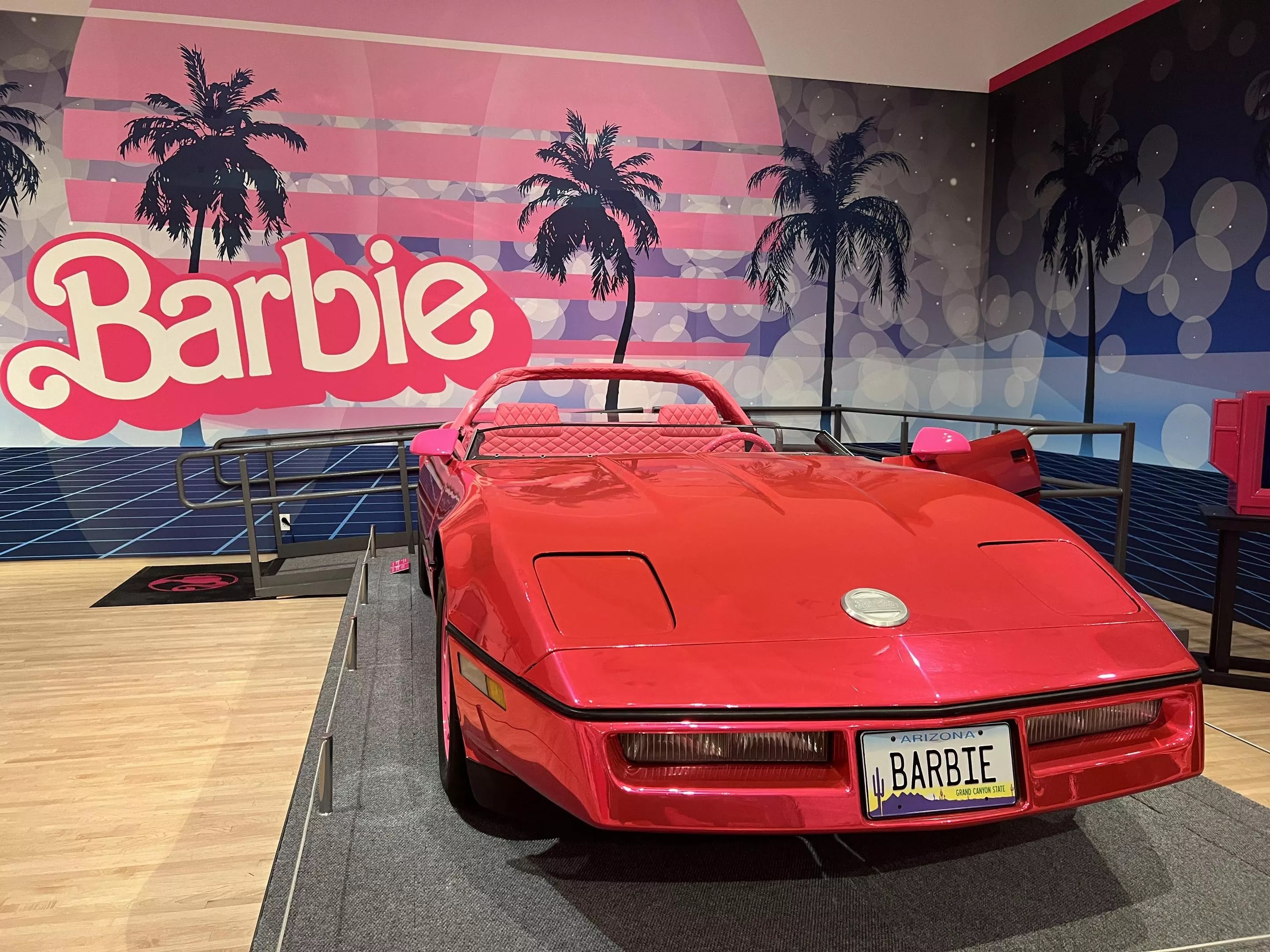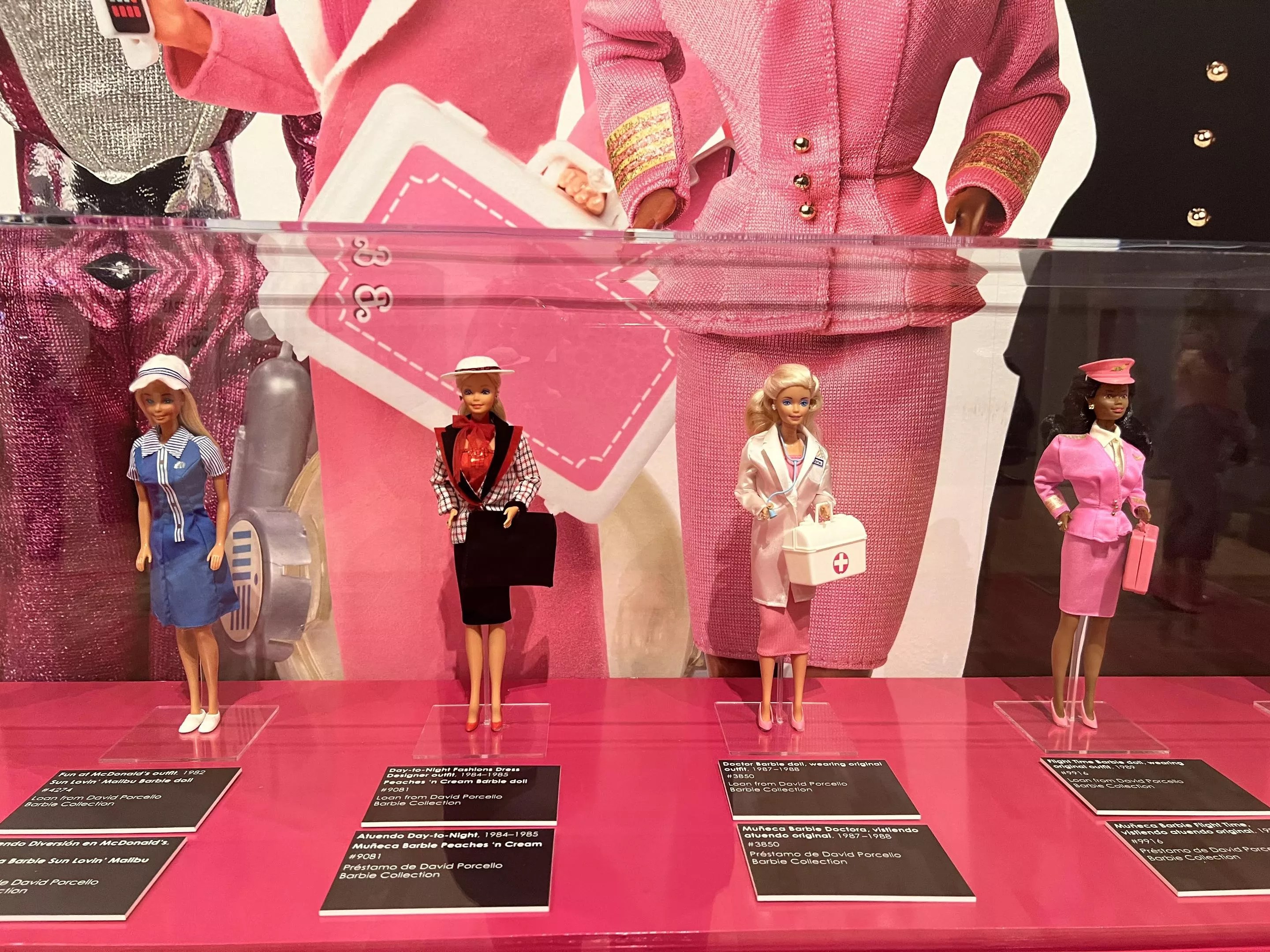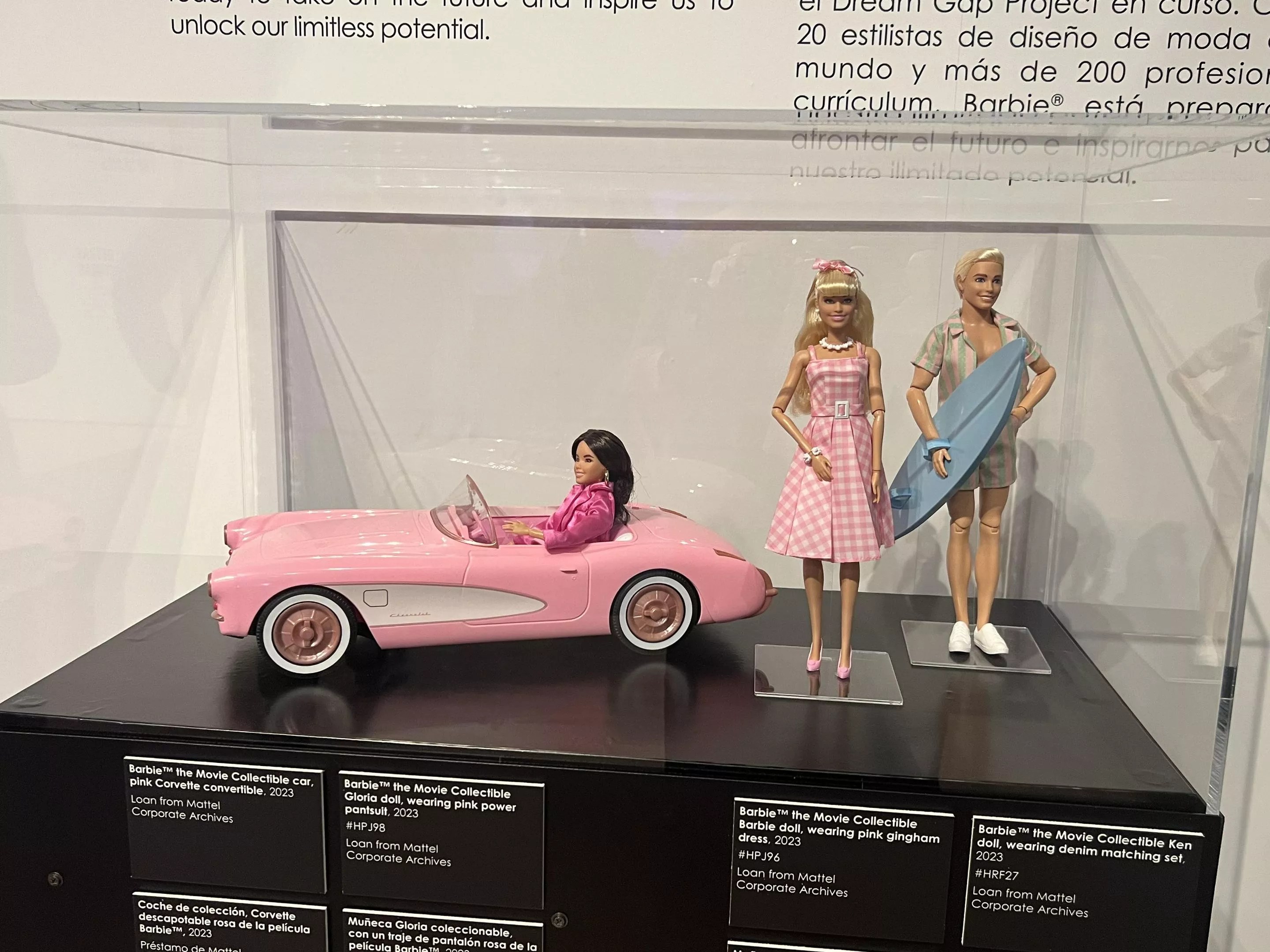
Jennifer Goldberg

Audio By Carbonatix
Phoenix Art Museum just became a dollhouse.
The institution opens its latest blockbuster show on Wednesday: “Barbie: A Cultural Icon” tracks the doll’s fashion evolution and delivers plenty to do and see, including dolls and outfits from every era; real clothing that inspired Barbie outfits; taped interviews with designers and other video content; and interactive photo ops including a Barbie car and a Barbie Dreamhouse.
The museum is hosting a “Pretty in Pink” Valentine’s Day event to celebrate from 5 to 9 p.m. Wednesday night; the $30 ticket gets visitors a pink carpet, DJ and dancing, complimentary sweet treats, valentine-making presented by Cut+Paste PHX, a scavenger hunt, a library pop-up and no-host bar with specialty drinks.
The show’s curator, Karan Feder, has had a long career in the world of glam fashion. After working as a Hollywood designer, she moved to Las Vegas and got involved with the Liberace Museum, helping to preserve the costumes of the piano legend. After that, she moved to the Nevada State Museum and spent eight years developing their costume collection, including acquiring the entire remaining costume stock from the Folies Bergere, the cabaret show that ran at the Tropicana Las Vegas for 50 years.
Then COVID hit, and Feder’s attention was drawn to the iconic doll.
We spoke to Feder about the development of “Barbie: A Cultural Icon,” what people can expect from the exhibit and why, after 65 years, Barbie is just as popular as ever.

Barbies from the 1980s in “Barbie: A Cultural Icon.”
Jennifer Goldberg
Phoenix New Times: How did you begin to develop this exhibit?
Karan Feder: One of my colleagues at the (Nevada) State Museum was – still is – a fantastic collector of vintage fashion, and part of the vintage fashion he collected was Barbie fashion. He wasn’t collecting Barbie dolls; he was collecting Barbie fashion as legitimate fashion.
I thought that was just the most interesting thing – I had never actually thought of the Barbie doll just from the perspective of fashion before. It always intrigued me, but I never had time to deal with it. And so I took up this project at the beginning of COVID, and I thought, I wonder if there’s a way to tell a story about the Barbie doll just from the perspective of fashion?
So this exhibition tells a narrative, explains Barbie’s evolution in fashion, in her closet, from ’59 to today, and along the way, we see life-size examples of pieces that the Barbie team may have been looking at, either extant samples or photographic examples from the culture that the Barbie team was influenced by.
That’s what this exhibit is all about. It’s really about talking about the history of our American culture through a perspective of Barbie fashion.
I read that Barbie clothing designers actually traveled to Europe to see what was happening in fashion over there. Is that true?
In 1959, when Barbie is born, there’s a single designer, Charlotte Johnson, and she was charged to reflect culture – not to get ahead of culture, not to create trends, but Barbie reflected current culture. So in order to do that, she would look at what people on the streets were wearing and she’d go shopping at boutiques to see what people were selling.
But the company also sent her to Europe to shop the runways, to see what was going to be happening next season. Because there’s a downtime for creating and designing these Barbie dolls. It’s at least 12 to 18 months, so Charlotte was designing something today that wouldn’t be seen until at least next year. So they were looking at European haute couturiers.
The trends she doesn’t follow are very interesting, too. Barbie never really had a punk outfit – the original ’70s punk, she never went there. She never really embraced Japanese minimalism; it was never really on her radar, so that’s interesting.
Now, all bets are off. Barbie wears whatever she wants constantly. She looks however she wants. For me, the tipping point is 2000. Certain rules were followed in terms of fashion generally, where we as consumers were dictated to. We were told what was going to be in for this next season, this next year, and then pretty much we adhered to it. There were always silos of folks who did their own things, but this was how the world went ’round. That isn’t how the world goes around anymore.

Barbies inspired by the 2023 film.
Jennifer Goldberg
How did interest in the exhibition change when buzz around the “Barbie” movie began to pick up?
It’s been absolutely fascinating to watch this evolution. The book I developed since the exhibition (“Barbie Takes the Catwalk: A Style Icon’s History in Fashion”), I was pitching the book before any of the buzz about the movie was out, and I got rejected constantly, and the rejection note was, “Well, Barbie really is not relevant anymore,” and that was the constant rejection: No one cares, no one’s thinking about Barbie.
And I was like “No, you’re absolutely wrong.” There’s a Barbie sold every six seconds out there in the world. It’s the most recognizable brand in the world. No one got it. So the “Barbie” movie, it did change things. It’s made the selling point of this exhibition easier. And I have to say that Margot Robbie has made the selling of a Barbie fashion exhibition easier, too. The fact that she looked at Barbie fashion and said, “I want to wear that,” sort of proves our point about the significance of the fashion that Barbie has been showing us since 1959.
It makes it even more fun, I think, because most people who were going to end up at this exhibition saw the “Barbie” movie and I think it’s going to be fun for them to come across some of the actual outfits that inspired (“Barbie” costume designer) Jacqueline Durran’s work in the film. I think those will be fun discoveries for folks.
Who will enjoy this exhibit?
It’s a multi-generational exhibition. Because Barbie has been around for 65 years, a mother, a daughter and a grandmother can all go to this exhibit and at some point find a little Barbie outfit they remember from their own childhood and just be in awe of it again. It’s like, “Oh my God, I remember that thing. I haven’t thought about that thing in 35 years, but there it is and I remember playing with it.” And that’s really fun to see, that it sparks this really great discussion among generations and they have this singular thing in common.
Why do you think Barbie is still so popular 65 years after her debut?
To be honest, I think it’s the fashion. There’s something magical about little teeny zippers that magically, perfectly close a dress on that Barbie form. For me, it’s magic. And it’s the miniature quality, the cuteness quality of things, I think that’s built into us as human beings.
But for me, it’s the fashion, because there is, across the generations, conflicts with the Barbie form that pop up in certain periods of time. So some people may fall off, some generations may fall off from being a Barbie fan based on the Barbie form, the physical form, but there’s nothing to argue about with the fashion. Because we trek through 65 years of her history, you will see every single Barbie form that has ever been put out there, but this narrative is about appreciating the fashion and how significant was that Barbie has always kept up with the fashion of the times. And what does that tell us about our culture, the American culture, and what does it tell us about the legacy of Barbie?
The fashion is what it is, and it’s always fantastic and magical. I think that’s the common denominator.
“Barbie: A Cultural Icon”: Through July 7. Phoenix Art Museum, 1625 N. Central Ave. Cost is included in general admission, which $28 for adults, with discounts for students, seniors and older children. Children ages 5 and under are free. Visit the Phoenix Art Museum website for information and tickets.